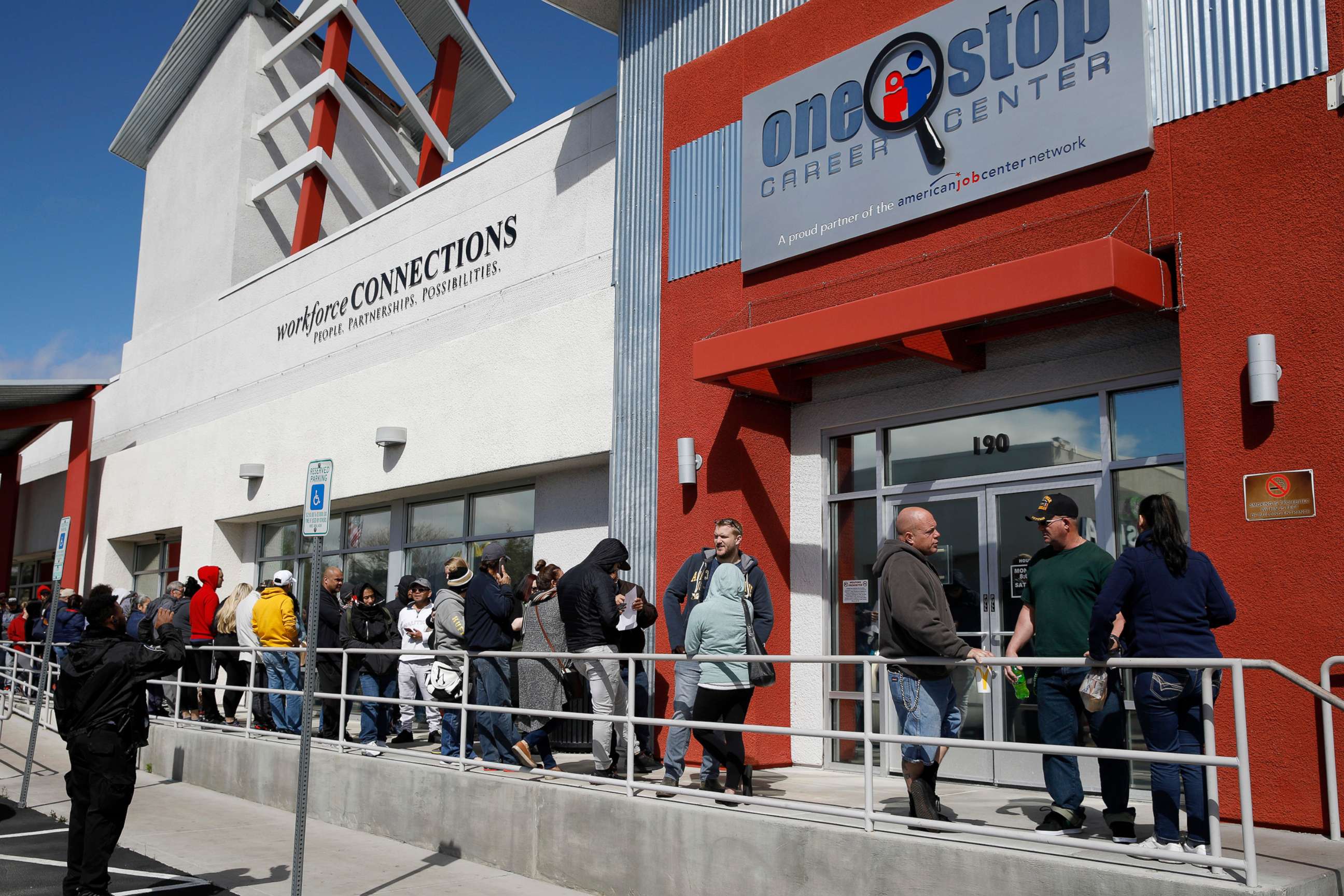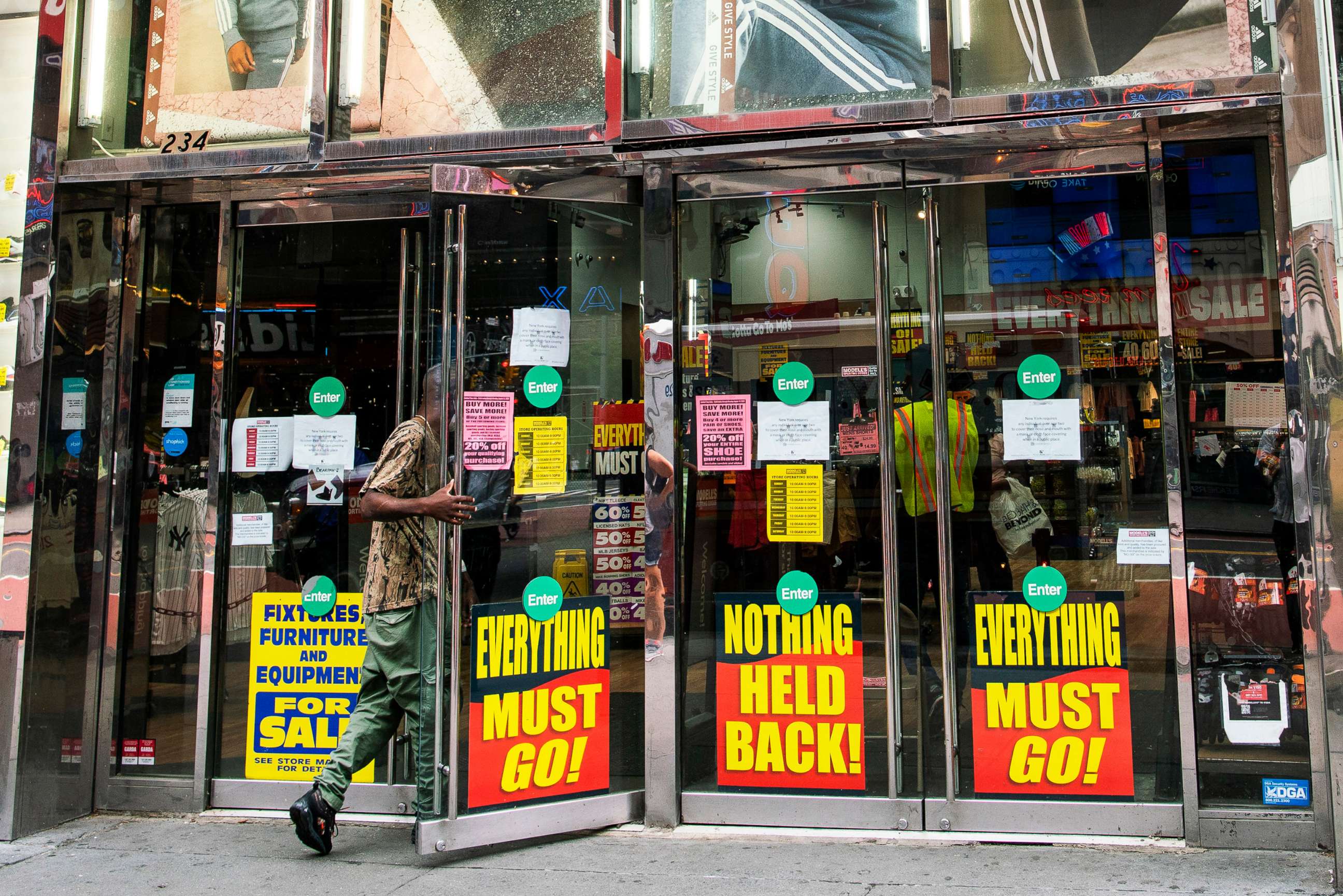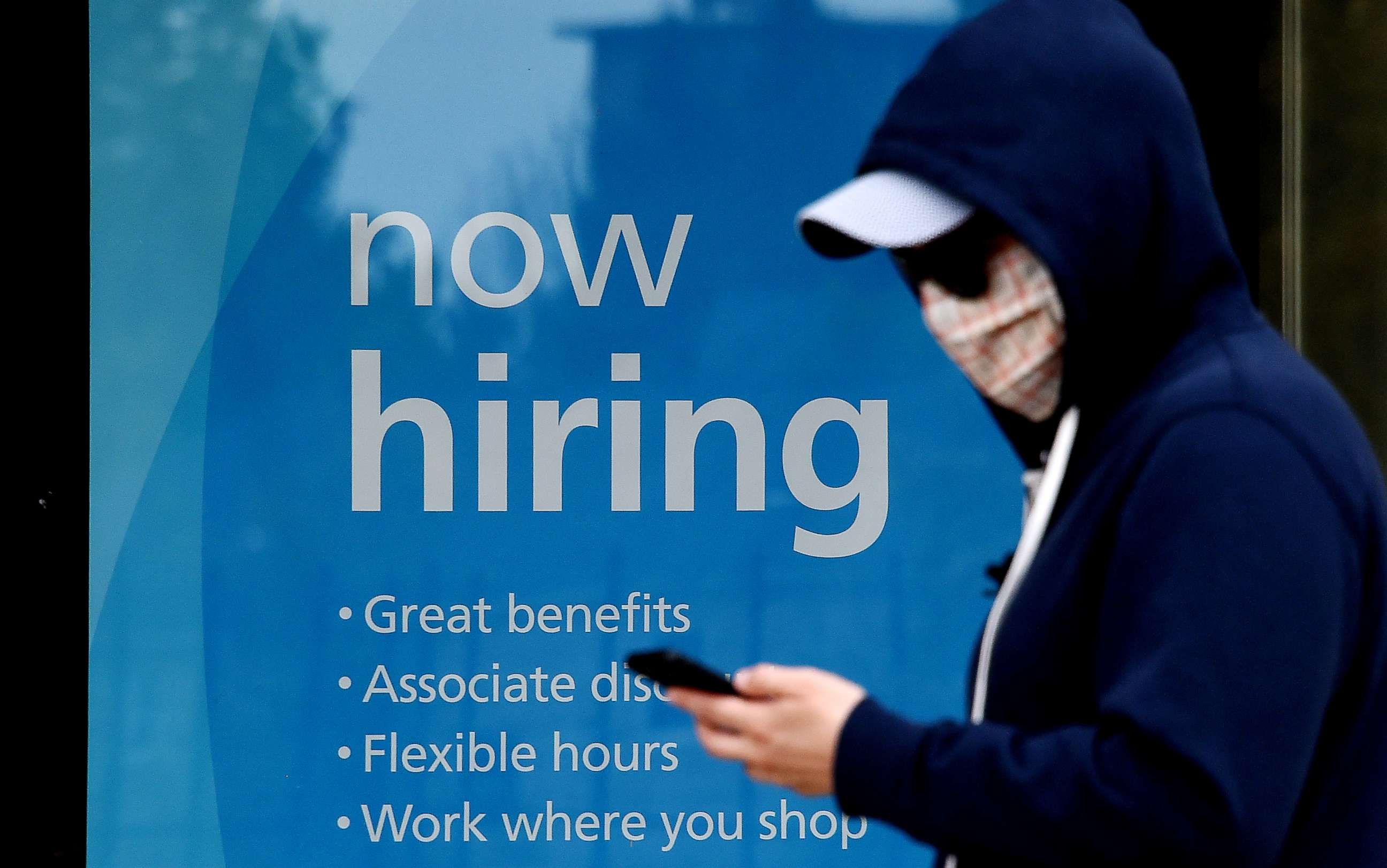US employers added 1.4 million jobs in August, unemployment rate at 8.4%
Prior to the pandemic, the unemployment rate was 3.5% in February.
U.S. employers added 1.4 million jobs last month and the unemployment rate fell to 8.4%, the Bureau of Labor Statistics said in its latest employment report on Friday.
While the fresh data may indicate some hope for an economy walloped by the COVID-19 crisis, the unemployment rate still isn't anywhere near pre-pandemic levels. In February, the unemployment rate was 3.5%.
"Looking at one month of job gains doesn’t provide the appropriate context, you really need to look and see how far we still are in the hole," Elise Gould, a senior economist at the Economic Policy Institute think tank, told ABC News ahead of the report's release. "In April, we lost more than 20 million jobs in one month. It's going to take months, if not years, to get back to that level."
The unemployment rate is now lower than 10% for the first time since the pandemic started, which was the high seen during the Great Recession.

Some of the most notable job gains in August occurred in the government sector, (which saw an increase of 344,000 jobs), the retail industry (which added 249,000 jobs) and the professional and business services industry (which saw an uptick of 197,000jobs).
An increase in government employment largely reflected the temporary hiring for the 2020 Census.
In August, employment changed little in mining, construction and information industries.

Broken down by racial groups, the unemployment rate in August was 7.3% for white workers, 13% for Black workers, 10.5% for Hispanic workers and 10.7% for Asian workers.
Now months into the COVID-19 financial crisis, like many economists, Gould said she is "just not optimistic at this point that we are going to have a V-shaped recovery."
"Because we are already seeing some of those [job] gains, while sizable, are not as steep as the losses were," she added.

Without a vaccine or effective treatment, a full economic recovery remains hamstrung, she noted, citing reclosings that have happened as COVID-19 cases ticked up in certain areas throughout the summer.
The latest BLS employment report also comes more than a month after the extra $600 a week in pandemic unemployment aid expired, and efforts to replace it at the federal level have fizzled.
While the bolstered assistance was a crucial lifeline for many to pay rent and put food on the table during the pandemic, Gould said it also bolstered economic recovery as a whole.
"I would be wrong not to mention that the expiration of the extra $600 unemployment enhancement means a slowdown of the economy as well," she said.
Without that extra unemployment money stimulating demand for goods and services, she said, "You're not able to breathe as much life into the recovery as you would have otherwise."
This is a developing story. Please check back for updates.




